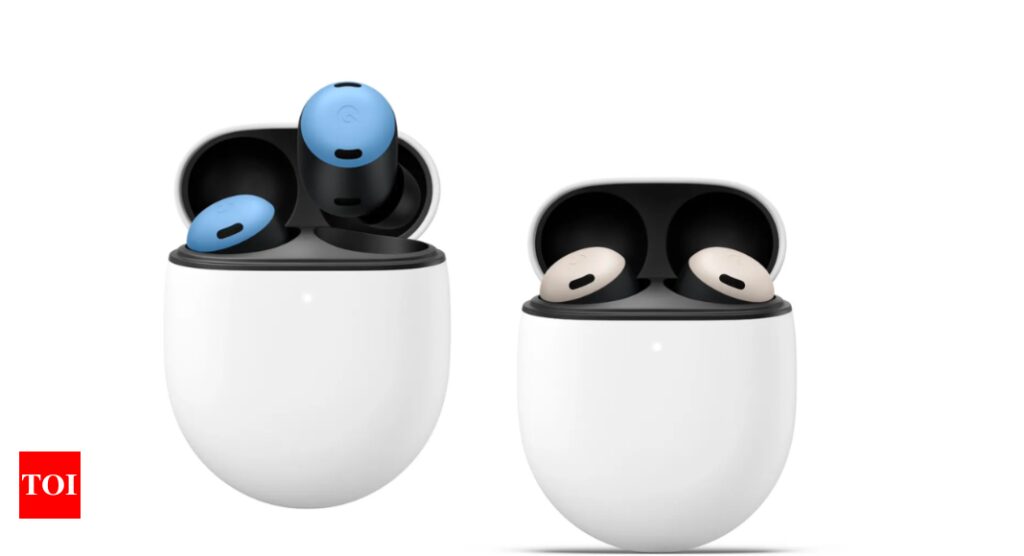[ad_1]
Google has shared details about its research into audio plethysmography (APG). This technology will enable the tech giant to add heart rate monitoring capabilities to active noise canceling (ANC) headphones and earbuds “with a simple software upgrade.”
In a blog post, Google claims that the “ear canal [is] an ideal location for health sensing”th. The company also noted that the deep ear artery “forms an intricate network of smaller vessels that extensively permeate the auditory canal.”
How audio plethysmography will work
Google explains that this technology works by “sending a low-intensity ultrasound probing signal through an ANC headphone’s speakers.”
“This signal triggers echoes, which are received via on-board feedback microphones.We observe that the tiny ear canal skin displacement and heartbeat vibrations modulate these ultrasound echoes,” the company added.
How Google is using it in ANC earbuds and headphones
Google has created a model that can process the feedback into a heart rate reading, as well as heart rate variability (HRV) measurement. This technique works when music is playing and even with “bad earbuds seals.”
However, this model was affected by body motion and Google countered with a multi-tone approach. This serves as a calibration tool to “find the best frequency that measures heart rate, and use only the best frequency to get high-quality pulse waveform.” the company claims.
Google has also performed two sets of studies with 153 people in which the company discovered APG “achieves consistently accurate heart rate (3.21% median error across participants in all activity scenarios) and heart rate variability (2.70% median error in inter-beat interval) measurements.”
Compared to existing heart rate sensors, the accuracy of APG is not impacted by skin tones. Neither does it get affected by ear canal size and “sub-optimal seal conditions”. Google also believes that this approach is better than adding traditional photoplethysmograph (PPG) and electrocardiograms (ECG) sensors, as well as a microcontroller in headphones/earbuds.
The company explains: “APG transforms any TWS ANC headphones into smart sensing headphones with a simple software upgrade, and works robustly across various user activities. The sensing carrier signal is completely inaudible and not impacted by music playing. More importantly, APG represents new knowledge in biomedical and mobile research and unlocks new possibilities for low-cost health sensing.”
In a blog post, Google claims that the “ear canal [is] an ideal location for health sensing”th. The company also noted that the deep ear artery “forms an intricate network of smaller vessels that extensively permeate the auditory canal.”
How audio plethysmography will work
Google explains that this technology works by “sending a low-intensity ultrasound probing signal through an ANC headphone’s speakers.”
“This signal triggers echoes, which are received via on-board feedback microphones.We observe that the tiny ear canal skin displacement and heartbeat vibrations modulate these ultrasound echoes,” the company added.
How Google is using it in ANC earbuds and headphones
Google has created a model that can process the feedback into a heart rate reading, as well as heart rate variability (HRV) measurement. This technique works when music is playing and even with “bad earbuds seals.”
However, this model was affected by body motion and Google countered with a multi-tone approach. This serves as a calibration tool to “find the best frequency that measures heart rate, and use only the best frequency to get high-quality pulse waveform.” the company claims.
Google has also performed two sets of studies with 153 people in which the company discovered APG “achieves consistently accurate heart rate (3.21% median error across participants in all activity scenarios) and heart rate variability (2.70% median error in inter-beat interval) measurements.”
Compared to existing heart rate sensors, the accuracy of APG is not impacted by skin tones. Neither does it get affected by ear canal size and “sub-optimal seal conditions”. Google also believes that this approach is better than adding traditional photoplethysmograph (PPG) and electrocardiograms (ECG) sensors, as well as a microcontroller in headphones/earbuds.
The company explains: “APG transforms any TWS ANC headphones into smart sensing headphones with a simple software upgrade, and works robustly across various user activities. The sensing carrier signal is completely inaudible and not impacted by music playing. More importantly, APG represents new knowledge in biomedical and mobile research and unlocks new possibilities for low-cost health sensing.”
[ad_2]
Source link











More Stories
Google Maps: Three privacy features coming to Google Maps on Android, iPhones
Most-Downloaded IPhone App: This Chinese app was the most-downloaded iPhone app in the US in 2023
Ukraine’s largest mobile operator goes offline for millions of users after cyber attack